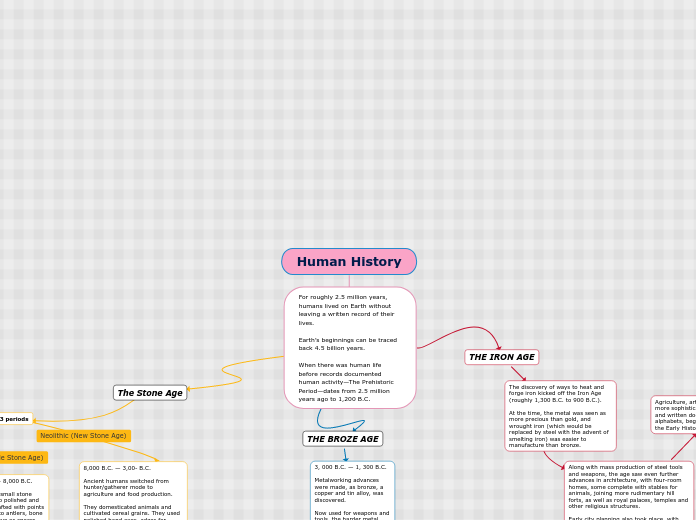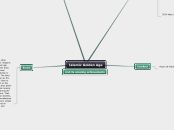Bianglala Tertinggi di Dunia Ain Dubai Resmi Diluncurkan, Tiket Hari Pertama Ludes Terjual
Subtopic
Untuk melacak sumber-sumber tersebut, sejarawan harus dapat mencari di berbagai tempat seperti di perpustakaan dan kantor arsip atau mengunjungi situs-situs sejarah di internet.
Langkah-Langkah
Penelitian Sejarah:Heuristik, Verifikasi,
Interpretasi, Historiografi
HEURISTIK
Masalah-masalah
yang kerap muncul
• Sumber sudah sangat tua
• Sumber tidak boleh sembarangan dibaca (pada daerah tertentu yang boleh
membacanya hanya orang-orang tertentu)
• Kesulitan dalam memahami bahasa yang digunakan
• Lebih banyak menggunakan tulisan angan (sumber tua)
• Sumber masih tertutup (batas dibukanya sumber sekitar 25 tahun)
Bentuknya
Sumber lisan
yaitu keterangan-keterangan yang diperoleh dari pelaku dan saksisejarah.
Contoh: rekaman pidato, video, hasil wawancara.
Sumber benda yaitu sumber sejarah berbentuk artefak atau hasil-hasil budaya yang ditinggalkan langsungdari zamannya.
Contoh: peralatan, penunjang kegiatan manusia sehari-hari, senjata, fosil, pakaian, bangunan-bangunan bersejarah
Sumber tulisan yaitu sumber berbentuk tulisan yang mengandung informi tentangsuatu peristiwa sejarah.
Contoh: prasasti, naskah, buku, dokumen tertulis, arsip, koran, dan internet
Cara memperolehnya
Sumber sekunder, yaitu informasi yang diperoleh dari pihak kedua.
Sumber sekunder dapat berupa:
buku teks, koran, majalah, ensiklopedi, tinjauan penelitian, dan referensi-referensi lain
Sumber primer, yaitu sumber yang datang langsung dari sumber pertama.
Sumber primer dapat berupa keterangan langsung dari:
pelaku dan saksi sejarah, dokumen asli laporan atau catatan, foto, benda peninggalan, film, artefak
Pengertian
heuristik berarti kegiatan untuk mencari, mengumpulkan, dan menghimpun jejak-jejak masa lalu berupa sumber-sumber sejarah.
Objek penelitian
Setelah mengetahui topik atau tema penelitian, maka peneliti dapat menggunakan langkah-langkah-langkah atau proses metodologis
Kemampuan intelektual adalah tingkat pengetahuan yang dimiliki oleh seorang peneliti terhadap objek yang ditelitinya.
Misalnya: seorang ahli sejarah tentang sosial-ekonomi tidak akan mempunyai pengetahuan yang mendalam tentang perkembangbiakan tanaman.
PENGERTIAN
Gilbert J.Geraghan
metode sejarah adalah suatu kegiatan
mengumpulkan, menguji, dan menganalisa data yang diperoleh dari peninggalan-peninggalan masa lalu,
kemudian direkonstruksi berdasarkan
data yang diperoleh sehingga menghasilkan kisah sejarah.topic
metode penelitian sejarah adalah seperangkat aturan atau prinsip sistematis untuk mengumpulkan sumber-sumber sejarah secara efektif,
menilai secara kritis dan mengajukan sintetis dari
hal-hal yang dicapai dalam bentuk tertulis.
Ilmu sejarah mempunyai objek penelitian sejarah.
Cara yang dilakukan dalam penelitian sejarah disebut metode sejarah.
OBJEK PENILITIAN SEJARAH adalah peristiwa-peristiwa
penting yang terjadi pada masa lampau.
METODE SEJARAH proses menguji dan menganalisa secara kritis sumber sejarah dan peninggalan masa lampau dalam rangka menghasilkan gambaran yang benar tentang peristiwa itu.
Human History
For roughly 2.5 million years, humans lived on Earth without leaving a written record of their lives.
Earth’s beginnings can be traced back 4.5 billion years.
When there was human life before records documented human activity—The Prehistoric Period—dates from 2.5 million years ago to 1,200 B.C.
THE IRON AGE
The discovery of ways to heat and forge iron kicked off the Iron Age (roughly 1,300 B.C. to 900 B.C.).
At the time, the metal was seen as more precious than gold, and wrought iron (which would be replaced by steel with the advent of smelting iron) was easier to manufacture than bronze.
Along with mass production of steel tools and weapons, the age saw even further advances in architecture, with four-room homes, some complete with stables for animals, joining more rudimentary hill forts, as well as royal palaces, temples and other religious structures.
Early city planning also took place, with blocks of homes being erected along paved or cobblestone streets and water systems put into place.
Agriculture, art and religion all became more sophisticated, and writing systems and written documentation, including alphabets, began to emerge, ushering in the Early Historical Period.
THE BROZE AGE
3, 000 B.C. — 1, 300 B.C.
Metalworking advances were made, as bronze, a copper and tin alloy, was discovered.
Now used for weapons and tools, the harder metal replaced its stone predecessors, and helped spark innovations including the ox-drawn plow and the wheel.
This time period also brought advances in architecture and art, including the invention of the potter’s wheel, and textiles—clothing consisted of mostly wool items such as skirts, kilts, tunics and cloaks.
Home dwellings morphed to so-called roundhouses, consisting of a circular stone wall with a thatched or turf roof, complete with a fireplace or hearth, and more villages and cities began to form.
Organized government, law and warfare, as well as beginnings of religion, also came into play during the Bronze Age, perhaps most notably relating to the ancient Egyptians who built the pyramids during this time.
The earliest written accounts, including Egyptian hieroglyphs and petroglyphs (rock engravings), are also dated to
The Stone Age
Divided into 3 periods
8,000 B.C. — 3,00- B.C.
Ancient humans switched from hunter/gatherer mode to agriculture and food production.
They domesticated animals and cultivated cereal grains. They used polished hand axes, adzes for ploughing and tilling the land and started to settle in the plains.
Advancements were made not only in tools but also in farming, home construction and art, including pottery, sewing and weaving.
10,000 B.C. — 8,000 B.C.
Humans used small stone tools, now also polished and sometimes crafted with points and attached to antlers, bone or wood to serve as spears and arrows.
They often lived nomadically in camps near rivers and other bodies of water. Agriculture was introduced during this time, which led to more permanent settlements in villages.
2.5 million years ago to 10,000 B.C.
Humans lived in caves, huts, tepees.
Humans were hunters and gatherers.
They used basic stone and bone tools, as well as crude stone axes, for hunting birds and wild animals.
They cooked their prey, including woolly mammoths, deer and bison, using controlled fire.
They also fished and collected berries, fruit and nuts.
Ancient humans in the Paleolithic period were also the first to leave behind art.
They used combinations of minerals, ochres, burnt bone meal and charcoal mixed into water, blood, animal fats and tree saps to etch humans, animals and signs.
They also carved small figurines from stones, clay, bones and antlers.
The end of this period marked the end of the last Ice Age, which resulted in the extinction of many large mammals and rising sea levels and climate change that eventually caused man to migrate.









